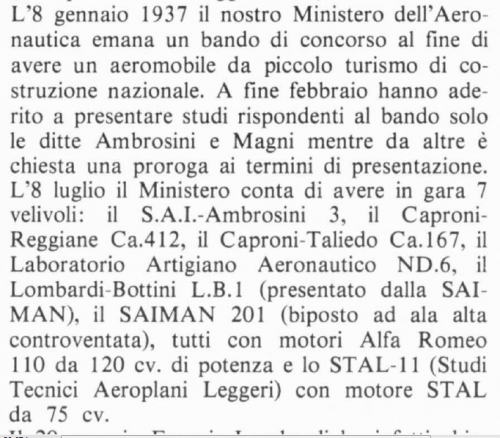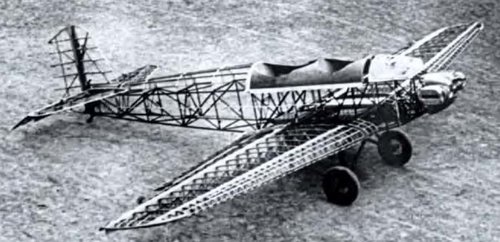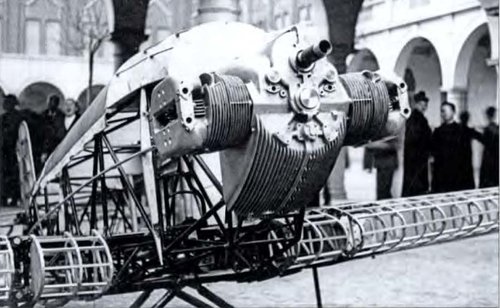It's been said before elsewhere but the STAL 11 wasn't an unbuilt project. Two airframes were built as STAL 11s (one for static testing) in 1936-'37 but, later, when refitted with an 80 hp CANSA C.80 engine 4-cylinder, the STAL 11 airframe became the 'new' CANSA C.4. (Alas, for the C.4, the AVIA L.3 was already flying.)
The STAL acronym is seen defined as 'Studi Tecnici Aeroplani Leggeri'; anonima società 'Studi Tecnici Aeronautici Littoria'; and 'Studi Tecnici Apparecchi Leggeri' (take your pick for which is correct). Chief designer was the vice-president, dott. Willy Rosenfelder. Prior to the STAL 11, beginning at the Politecnico di Torino, dott. Rosenfelder had designed a range of extrememly low-aspect ratio winged light planes. [1]
The engine designer was Giulio Cesare Cappa - best known as an automotive designer (with Fiat and Bugatti). While at Fiat, Cappa designed a range of aircraft V-12s (of which only the A.14 could be considered successful). He also designed a water-cooled radial - the A.18. [2] For aero-engines, Cappa was more known for experimentation and innovative design than for producing production-worthy engines.
Cappa had began by building motorcycles - which shows in his STAL engine design. He was also known for extensive use of aluminum in engine construction (an expensive proposition in Italy at the time). But I don't know if his 75 hp STAL HO2 engine was of aluminum construction or not.
__________________
[1]
https://www.secretprojects.co.uk/threads/willy-rosenfelter-s-t-a-l-projects.30864/
With some speculation, Giovanni Masino speculated that the X-1 (the first 'circle-wing') would have become the STAL 1 (STAL having been formed within a fortnight of X-1 drawing date). The trapazoid-wing design was the STAL 3 which suggests that the 'unknown' second 'circle-wing' was probably designated STAL 2.
[2] His Itala Cappa 18 aero-engine prototype has been preserved.



